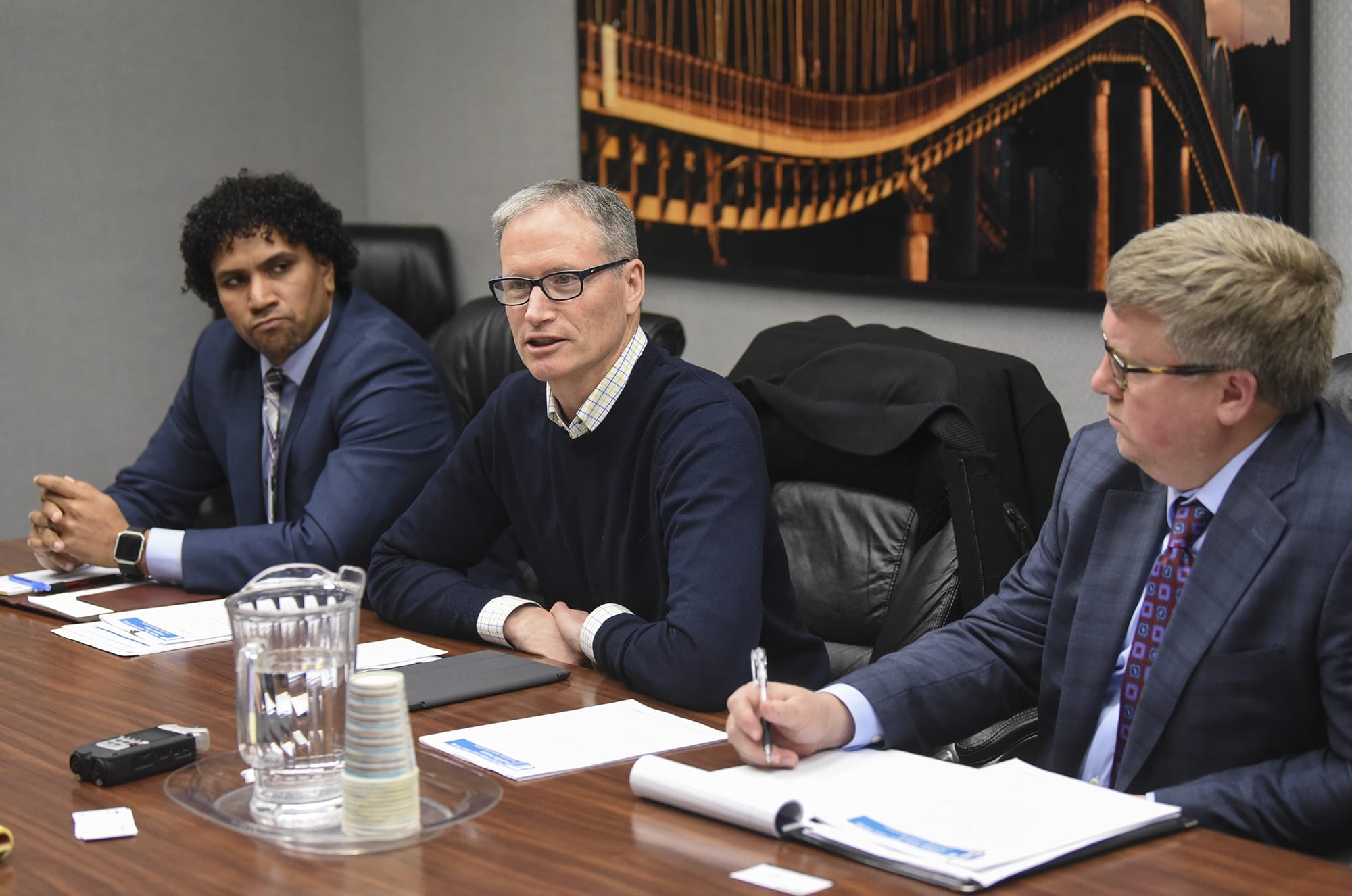PORTLAND — Tolling at the state line between Oregon and Washington is not yet off the table as the Portland Region Value Pricing Advisory Committee continues to evaluate implementation of value pricing in Oregon.
The committee evaluated seven different tolling options and compared the results to potential impacts of forgoing a toll altogether. Those options were the focus point of the committee’s third meeting Wednesday as it moved closer toward making a recommendation as part of Oregon’s $5.3 billion transportation plan.
The Oregon Department of Transportation has been directed to develop a proposal for value pricing to finance the plan.
Washington’s interests are represented by Vancouver Mayor Anne McEnerny-Ogle, Clark County Councilor Eileen Quiring and Washington State Department of Transportation’s Southwest Regional Administrator Kris Strickler.
Of the seven options considered, five will move forward for further analysis. But the committee made it clear that the entirety of Wednesday’s discussion remains in the concept stage.
One detail did seem to be more certain than others: tolling isn’t likely to occur directly on the Interstate 5 Bridge.
“Frankly, having it tolled to one side of the bridge is going to act as a throttle, and you don’t get that much more benefit of tolling the bridge itself,” said Chris Swenson, southeast director for toll systems and managed lanes for WSP, an engineering consulting firm working with the committee. “We tolled right up to the bridge (in the evaluations) but did not toll the bridge itself.”
The I-5 Bridge seemingly cannot be mentioned without considering its future overall.
“At some point, there will be a conversation about a bridge, probably not the one that’s there,” said Sean O’Hollaren, one of the committee’s co-chairs and Oregon Transportation Commission member. “Hopefully, we’re looking forward to at some point in the future working with (Vancouver) on what a bridge looks like.”
Five options
The five tolling options moving forward are:
• Tolling the existing northbound I-5 HOV lane and an existing regular southbound lane north of Going Street.
• Tolling all lanes on I-5 between Going Street and Multnomah Boulevard.
• Tolling all lanes on I-5 and Interstate 205 from south of Marine Drive to the merging point of both freeways.
• Creating a new toll lane on I-205 between state Highway 99E and Stafford Road and tolling all lanes on the Abernathy Bridge.
The two options not moving forward proposed converting one lane on I-5 to a tolling lane and adding a new lane to I-205 and/or converting one I-5 lane and tolling all lanes on I-205.
The standout favorite of the five options is tolling all lanes on I-5 and I-205. This option provides the most congestion relief with moderate capital costs and the largest revenue potential.
Spreading the tolling across a larger area would reduce the cost impact to drivers, Swenson said.
“That toll is going to be set to maximize throughput. It’s not going to be set to chase people off,” he said. “It’s going to be set as low as it possibly can be and manage the demand.”
McEnerny-Ogle said she does not support the option to toll just the northern section of I-5. That proposal would convert the existing northbound high-occupancy vehicle lane to a toll lane and convert a southbound lane to a tolling lane.
As the committee gets closer to making a formal recommendation, it may consider some combination of at least two of the options.
Even if the most significant proposal was selected — tolling all lanes of I-5 and I-205 — David Ungemah, WSP’s managed lanes and roadways service area manager, said it would make sense to implement some of the smaller projects first and work up to the complete proposal. But to be effective, implementation of tolling on I-5 and I-205 would need to occur simultaneously to avoid additional congestion on either freeway due to drivers taking an alternative route to avoid a toll.
The committee was also slated to discuss mitigation and diversion options to ensure income and geographic equity but ran out of time during the three-hour meeting. The issue was pushed to the next meeting on April 11, when the committee will also consider further analysis of tolling options.
The committee is set to make a final recommendation to either implement one of the tolling options, which could be no tolling at all, June 25.




